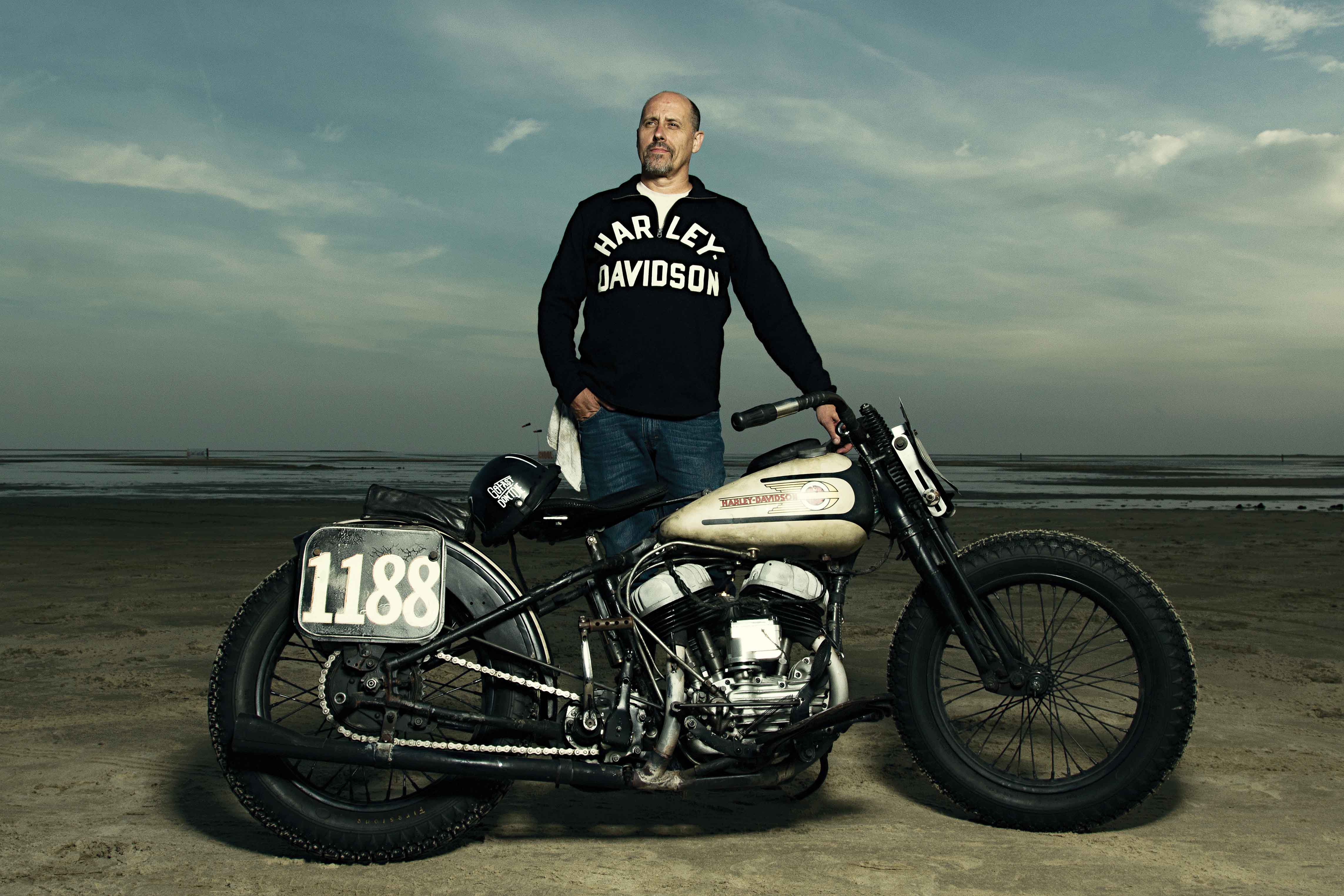
Oklahoma’s Chris McGregor Crosses The Atlantic With His
1942 Harley-Davidson WLA To Race On The Beaches Of Denmark
and Celebrate A 100 Years Of Danish Racing
Words by Kali Kotoski
Photos by Stefan Sell and Ben Ott
“When I first saw Chris on the beach, I remembered that scene from The World’s Fastest Indian, when the character finally gets to Utah’s Bonneville Salt Flats and pauses to take the view in. It was just the man being a man by himself, and Chris must have felt the same way when he saw the American flag and the beach track. It gave me goosebumps,” said Harley-Davidson Hamburg Nord Sales Manager Steffen Gödecke.
When Oklahoma’s Chris McGregor first started racing vintage motorcycles some five years ago at New Jersey’s The Race of Gentlemen, it would have been difficult to imagine that he ever would stand on the sparsely inhabited Danish island of Rømø—the southernmost island in the Danish Wadden Sea—let alone with his WWII-era, military-issued, Harley WLA (NOT an Indian).
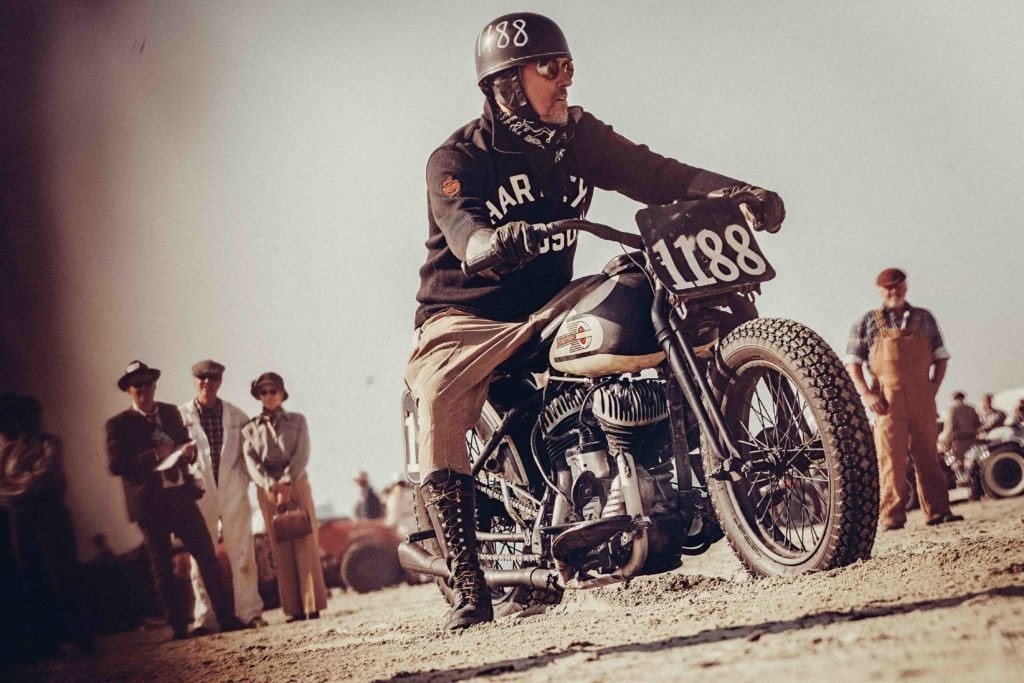
But that is exactly where he was over Labor Day Weekend, with the ruffle of cold northern waves beating against miles and miles of beach, surrounded by vintage cars and motorcycles shimmering in the sun, and wearing a dapper corduroy Harley jersey, tall leather boots and mountaineering sunglasses.
Pitted against some Carlsberg- and wine-hardened Europeans from as far east as Poland and as far south as Spain, McGregor was the only American racer—and the only American to ever be invited to the Rømø Motor Festival, which was celebrating 100 years of Danish racing.
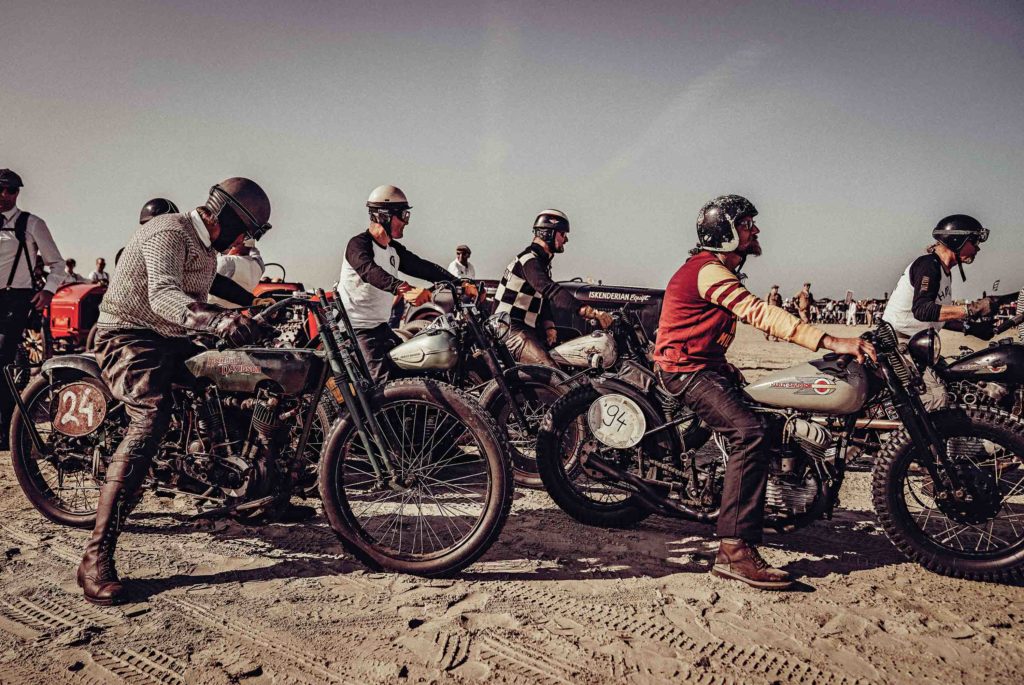
“It was quite epic to be there with about 40,000 people sitting on the dunes watching me race with racers from 15 different countries,” said McGregor. “It is very different in Europe compared to TROG. The attitude and the antics.”
The Rømø Motor Festival is a unique event that harkens back to a more civilized time when there were refined ladies and gentlemen. Racing attendees must wear period-correct clothing like wool vests, ties, overalls and fedoras, while women wore their hair short with pinned-up curls and waves. The event, resurrected in 2016, pays homage to Danish racing from 1919 to 1924, when the nearby island of Fanø was home to large beach races. The races were unfortunately canceled after a 15-year-old boy was killed by a runaway tire from one of Major Sir Malcolm Campbell’s Blue Bird racers, which set records that day by reaching over 130mph on a one-kilometer stretch.

While the event could be, by appearances, compared to its New World counterpart TROG, McGregor said the events are incomparable, with Rømø being more laid back and grassroots with a deliberate lack of order or rules.
“Over there it is just fun,” McGregor said. “How do you know who won? Well if you are ahead of the next guy, you won. There are no brackets, whereas TROG is competitive like the Superbowl.”
As for the antics, Gödecke recounted how McGregor was teased as being the sole member of Team America: World Police, a common light-hearted European jab.
The rules really are loose, Gödecke explained. Nothing will disqualify a racer that has shown up, even if parts are zip-tied together. Bikes with magnetos only helped beat other people’s asses and cheating and tricks are all part of the fun.
“There was an 80-year-old Swedish guy with a really fast Knucklehead. He couldn’t kick start his bike and his mechanic would do that. But as soon as he raced, he was just like the young guys,” he said.
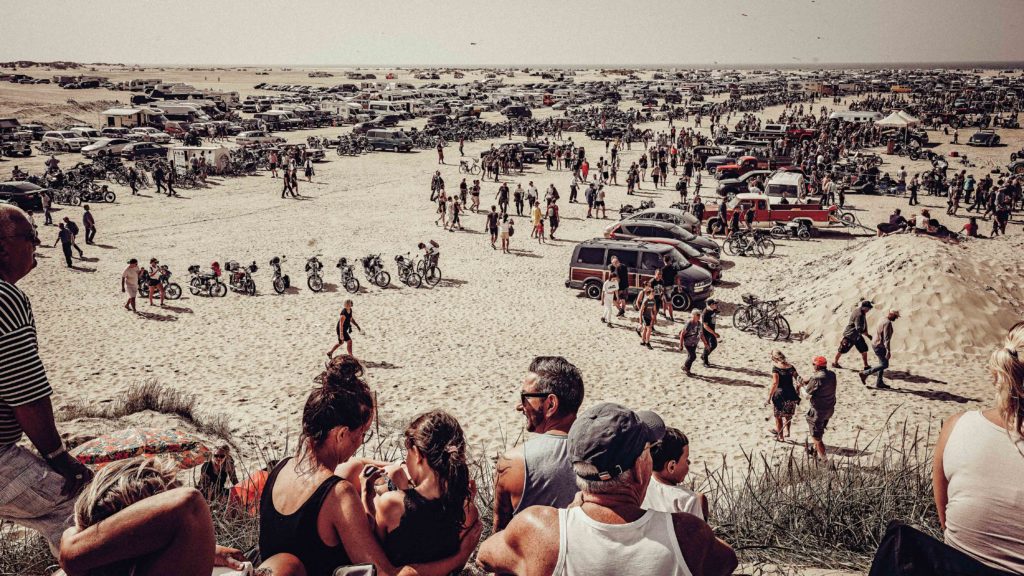
The perpetual shit-talking was also very real, according to McGregor, with most of the racers being Rømø veterans that only see each other once a year. Plus, when it was announced that one of the race teams was named Salty Balls, it was only logical that the two gentlemen wearing chicken head masks were married to the team.
“Yep, they had two cocks and salty balls,” said McGregor.
McGregor first heard about the race in 2017 and decided that the 100th anniversary was something he couldn’t miss. It took months of planning and dealing with customs officials before he sent his bike over by air, not comfortable with sending it by boat. He couldn’t stomach having the bike out of sight for up to a month as it bobbed across the Atlantic, especially given the recent overhaul.
Mike Silvio from Cyclemos Speed Shop in Northern Tennessee was tasked with making McGregor’s bike as mean and savage as possible with big valves and a terror for an exhaust.

“I put $20,000 into my engine. I did everything you can do except making it a grenade,” McGregor said. “It was the loudest bike out on the beach, with everybody covering their ears, even the flag girl.”
This was McGregor’s first race with the new build, and he was lucky to have Gödecke as a mechanic. The bike had issues with starting and a few parts had shaken off during a pre-race beach run. For Gödecke it was a natural fit to be the mechanic, but destiny also played a role.
“Because [Chris] had an 1188 plate for the Dead Man’s Hand, I showed him the Dead Man’s Hand tattoo on my arm and it was a sign that we had to fight together,” he said.
The 1188 plate came from McGregor’s friend when he first got the bike. ‘This is some real dead man walking stuff you got,’ the friend said.
Which is fine for McGregor as he proudly wears a Go Fast, Don’t Die shirt that reads “Faster and Faster Until the Thrill of Speed Overcomes the Fear of Death.”
“When I race, for six to eight seconds, the rest of the world just disappears,” he said.
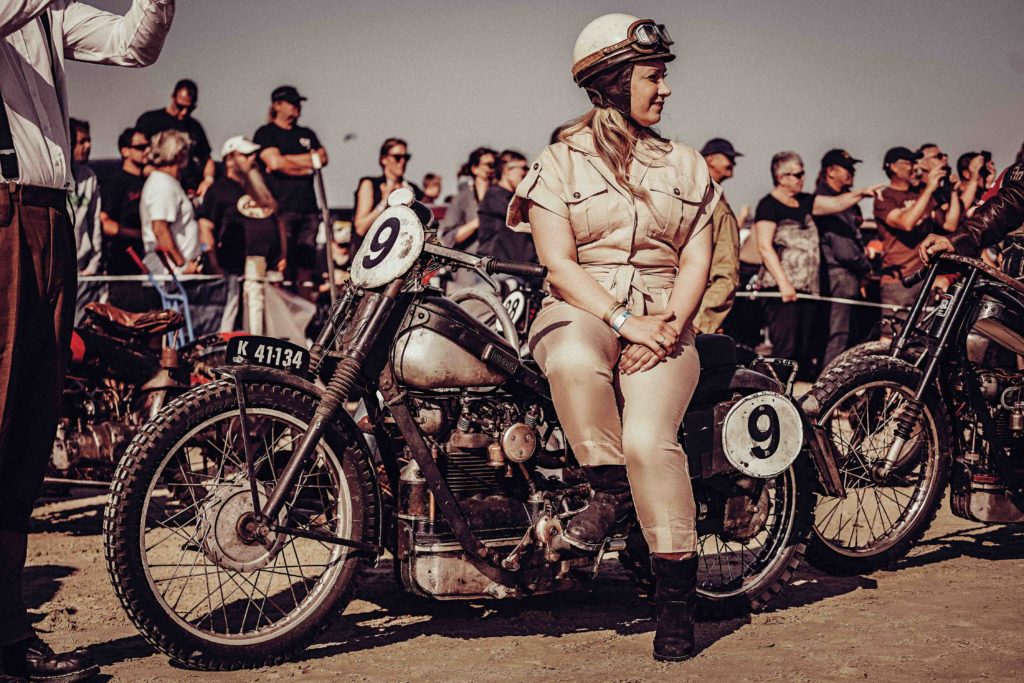
Luckily, McGregor survived his trip across the pond while showing those krauts, frogs, pollocks, dagos and limeys how an American carpetbagger can race (he was not the fastest but he did NOT get beat by an Indian). Or as his wife Missy put it, “everyone was so generous and thoughtful and really did everything to make sure we were taken care of. We felt as if we were part of a family.”
McGregor is now back in the U.S., but his European racing days are not over. He will fly to France in late September to attend France’s first-ever vintage Normandy Beach Race on Sword Beach and reunite with Gödecke. Sword Beach was one of the five main landing points for the Allies on D-Day. McGregor has put a lot of thought into this symbolic race at a place that changed the tides of history.

“Some guys are like how can you ride on that beach where so many people died? And I say, we can race there because of the men before us. When I am on my bike, I am always thinking about the guys who rode my bike during the war and the freedom they brought and that lets me race on that beach,” he said.
Gödecke will be riding down to Normandy on his grandfather’s 1938 Indian Chief, which he snagged during WWII. Gödecke’s grandfather, Gunther, was on his way to fight the Allies in Normandy in 1944 when his train was hit by a British aircraft and he took shrapnel in the knee. After D-Day, while he was recuperating in the hospital, the Americans made him a prisoner of war. But as a skilled piano builder, the G.I.’s quickly put him to work after it was discovered that the POWs had a better sounding instrument then they had in the bar. From there, Gunther traveled back and forth around France, fixing pianos so that people could begin to enjoy life again. It was on one of those trips that the G.I.’s allowed him to grab an old busted up Indian from the side of the road, which he then fixed up in the camp.
“When he was released from the POW camp and returned to Germany, everybody else was marching on foot and he came home with an Indian,” Gödecke said with a laugh.



